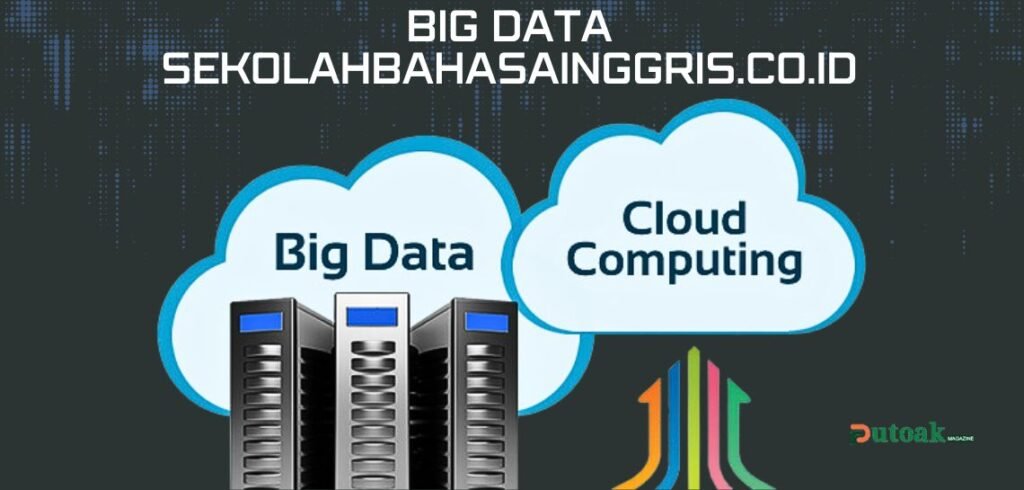Big data analytics offers useful insights into consumer behavior, industry trends, and operational efficiency, and it is revolutionizing the way businesses run. Businesses may make better decisions and engage with customers by using real-time analytics to obtain insights and act instantly. We will examine the latest developments and industry best practices for big data sekolahbahasainggris.co.id and real-time analytics in this post.
What is big data sekolahbahasainggris.co.id?
Big Data Sekolahbahasainggris.co.id is characterized as data that is large, moving quickly, or complex enough to make it difficult, if not impossible, to process using traditional methods. A lot of data can be accessed and stored for later review for a long time. But in the early 2000s, analysts began to define big data in a way that is now widely accepted. This helped the concept gain momentum.
Factors of big data sekolahbahasainggris.co.id
The list below shows the factors that Big Data sekolahbahasainggris.co.id depends on. It has several factors.
- Volume: Companies collect data from many sources. These include social media, electronics, and IoT devices. Also, transactions, and audio, video, and picture records. In the past, storing all that data would have been too expensive. But, the burden has been lessened by the availability of cheaper storage. This is thanks to data lakes, Hadoop, and the cloud.
- Speed: The Internet of Things is causing data to enter businesses at new rates. They must manage it quickly. For smart meters, RFID tags, and sensors, this data must be managed right away.
- Variety: You can find information in many formats. These include unstructured text, emails, transactions, videos, music, and unstructured digital files. They also include structured data in traditional databases.
- Variability: Data streams vary greatly. They are highly variable, and they speed up and diversify over time. Associations need to know when anything is shared via online entertainment. They also need to know how to manage regular, sporadic, and sporadically triggered information loads. It might be challenging, but they need to do it.
- Veracity: Precision is referred to as the degree of information quality. Data comes from many sources. So, you need to connect, combine, clean, and change it to move it between systems. In business, you need to connect and link many relationships, hierarchies, and data. If not, it might be easy for your data to become out of control.
Real time application of Big Data
Future big data and real-time analytics will be shaped by many innovations. For example:
- Edge Computing: This refers to the processing of data closer to the data source, at the network’s edge. For businesses, this means that they can process and analyze data instantly. They can do so without needing to send it to a central location.
- Artificial Intelligence and Machine Learning: These fields of study allow companies to automate data analysis and interpretation. This leads to insightful reports and better decision-making.
- Blockchain: Blockchain lowers fraud and data manipulation risk. It lets businesses record and share data transparently and safely.
Best Practices for Big Data and Real-Time Analytics
Big Data sekolahbahasainggris.co.id businesses should use these best practices. They will fully get the benefits of big data and real-time analytics.
- Define Clear Objectives: Businesses should set clear goals for their big data and real-time analytics. The goals should include finding the data that needs analysis. They should also include the insights the company hopes to get. And, the steps the company will take in response to those insights.
- Invest in Skilled Personnel: Companies should spend money on hiring qualified staff. They must be adept at handling and interpreting data. We need big data analytics, real-time processing, AI, and other tech know-how for this.
- Ensure Data Quality and Security: Companies that use big data and real-time analytics should ensure that their data is safe. They should also ensure that it is of the highest quality. This requires strong data security. It also requires following data privacy laws.
- Choose the Right Tools and Services: Managing data well requires businesses to pick the right tools and services. This includes picking a cloud provider. It involves choosing analytics tools. And, it means automating data analysis and interpretation with AI and machine learning.
Important of big data sekolahbahasainggris.co.id
In the context of Big Data sekolahbahasainggris.co.id, quantity is not the only thing that matters. Its worth is determined by how you utilize it. You can find answers by analyzing data from any source and determining:
- Boost the effectiveness of operations.
- Expedite the creation of new products.
- Provide new income and opportunities for expansion.
- Encourage the making of informed decisions. Big data sets and great performance analysis make it easier to finish business projects. For example:
- As mistakes, problems, and defects arise, identify their root causes.
- Find irregularities faster and more accurately than the human eye can.
- Improve patient outcomes by turning medical imaging data insights into actionable insights fast.
- In a matter of minutes, entire risk portfolios can be computed again.
- Improve the deep learning models’ ability to classify data well. They should also adjust to changing conditions.
- Recognize fraudulent behavior before it has an impact on your organization.
Disclaimer: “The details mentioned in this article is only for the information purpose and the the website doesn’t have any kind of ownership or authorization with big data sekolahbahasainggris.co.id.“
Conclusion
Big Data sekolahbahasainggris.co.id seen revolutionizes business. It does this by providing insights into consumer behavior and efficiency. Real-time analytics enables better decision-making and customer engagement. Key factors include volume, speed, variety, variability, and veracity. Innovations like edge computing and AI shape the future. Best practices ensure data quality, security, and use.

